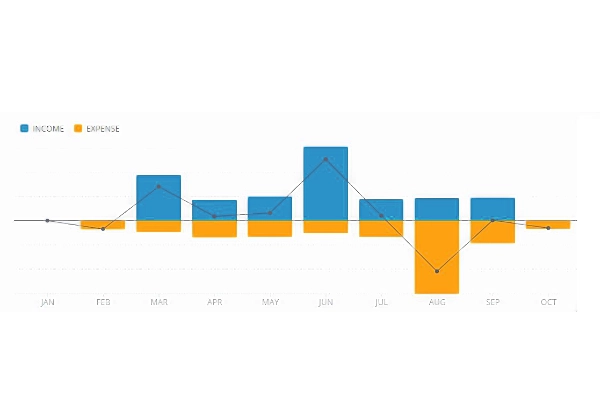
Digital Construction in 2025: Reducing Risk, Securing Cash Flow, and Strengthening Business Stability
In architecture, engineering and construction industries (AEC), creativity and execution drive projects forward. But too often, firms focus so heavily on delivery that they overlook the structural health of their business. Financial oversight, risk management, and operational efficiency are treated as back-office concerns until a crisis forces them into the spotlight.
In a competitive and regulation-heavy environment, this reactive approach no longer works. Firms must adopt a proactive, digital-first mindset not just to improve project delivery, but to safeguard business stability, reduce waste, and maintain cash flow.
This article explores how digital construction principles applied strategically mitigate risks, streamline operations, and enhance financial performance in ways that protect both your projects and your profit margins.
Why Now? Because managing 2025 realities with 2015 systems won’t work anymore
The AEC sectors are at a critical junction: margins are getting tighter, project complexity continues to rise, and both the govt. and clients are demanding more transparency and accountability.
When it comes to govt., they are further pressurising AEC firms with regulatory compliance such as documentation, delivery standards, and environmental performance. From all this combined, stems a real and greatest challenge for AEC sectors: how to stay profitable in the face of constant disruptions?
And to tackle these challenges, AEC firms are still using 2025 realities. However, managing 2025 realities with 2015 systems won’t work. Disconnected teams, outdated workflows, and reactive decision-making leave businesses exposed to project delays, cash flow instability, and shrinking profit margins.
Therefore, if you want to survive and stay competitive in this market, you need to be more than good enough at what you do. You need to be structured, strategic, and digitally enabled. This is what Digital Business Stability and DDC Solutions are concerned with.
The Hidden Cost of Ignoring Digital Business Practices

Construction firms today operate in a complex landscape marked by rising compliance demands: health & safety regulations, environmental accountability, evolving standards, and increasing client expectations for transparency and delivery.
While most firms meet these demands at the project level, many lack structured systems behind the scenes to manage risk, track performance, or forecast financials. As a result, they absorb unnecessary costs and expose themselves to:
- Project and financial disruptions from poor planning
- Increased risk exposure due to reactive management practices
- Unstable cash flow from unstructured or inefficient operations
In short, when your business systems lag behind your projects, your bottom line suffers.
Digital Construction: A Strategic Risk Mitigator
Firms that implement digital tools and processes not as a compliance checkbox, but as part of their business model see measurable improvements across the board.
According to Procore (2024):
- Incident rates were 26% lower in firms using structured digital tools
- Lost workdays due to safety issues were reduced by 22%
- High-adoption firms saw 40% lower incidents and 39% fewer lost workdays than their analogue counterparts
These numbers aren’t just health and safety wins. They point to fewer project delays, lower insurance claims, stronger reputations, and ultimately, better margins.
Yet according to Financier Worldwide, while 98% of firms agree digital transformation is essential, only 25% have a strategy in place.
This gap represents a major opportunity for firms to turn operational improvements into real financial gains.
Why Cash Flow Remains the Weak Link

Cash flow challenges are not new in construction but they’re increasingly preventable. Many firms still operate with outdated or manual systems for forecasting, cost tracking, or resource planning.
Common Risk Factors:
- Delays and overruns that eat into profits
- Lack of real-time visibility into spending and performance
- Infrequent or siloed strategic reviews
- Disconnected teams and tools that prevent accurate forecasting
The Solution
A structured, digital-first approach to project setup, cost tracking, and financial insight. McKinsey & Co. reports that “firms embracing digital optimization reduce cost waste by up to 20%.”
Whether it’s implementing smart project setup routines or adopting predictive risk models, forward-thinking firms are using data, automation, and digital oversight to catch issues before they become cash flow crises.
From Compliance Burden to Competitive Advantage
Many construction firms view compliance, digital platforms or structured standards as burdens. But these are actually your best tools for achieving long-term stability and growth if used right.
The key is shifting from a compliance mindset to a business benefit mindset. Digital delivery, structured processes, and intelligent collaboration don’t just help you tick boxes, they help you:
- Avoid mistakes that eat into your profit
- Forecast performance accurately, even in complex projects
- Align your team, tools, and workflows to reduce business disruptions
- Make confident decisions that protect your cash flow
In other words, you reduce the cost of chaos.
The Shift: Business-First Problem Solving
To build a more stable and profitable business, firms must stop seeing project issues as isolated technical glitches. Missed deadlines, coordination problems, and rework are business problems first and solving them starts with setting up your business systems to prevent them.
Digital construction is not about technology it’s about predictability, transparency, and smarter decision-making.
Firms that don’t have the internal capacity to restructure their operations digitally can benefit from working with teams that specialize in transforming these inefficiencies into measurable business outcomes. The aim isn’t just better projects, it’s a healthier, more resilient business.
What Happens Without Digital Business Stability?

Further delaying digital transformation will result only in one thing: exposing your business to compounded risks. And we strongly believe you can afford to do that.
- Absence of digital practices means following for your businesses:
- Profit margins will either decline or completely diminish. Factors influencing will be constant rework, firefighting, and unpredictable costs.
- Cash flow will become volatile. It means it will become increasingly difficult to reinvest, grow, or even pay to suppliers on time.
- Constant coordination breakdowns and missed deadlines will diminishes the trust of clients, making it more difficult to retain them.
To fully grasp the risk factor vis-a-vis lack of digitization, download this brochure.
The longer you operate without structured systems, the more difficult it becomes to scale, compete, and remain profitable.
Digital Business Stability is No Longer Optional
In 2025 and beyond, construction firms that want to thrive must evolve beyond project-focused delivery models. Structured digital processes reduce risks, protect margins, and ensure that every project strengthens, not strains your business.
When you see digital construction as a strategic tool, not a regulatory hurdle, you gain:
- Lower exposure to risk and rework
- Improved cost control and predictable cash flow
- A foundation for long-term business resilience and growth
Digital business stability is how you move from surviving to thriving in a competitive construction market.


One Response